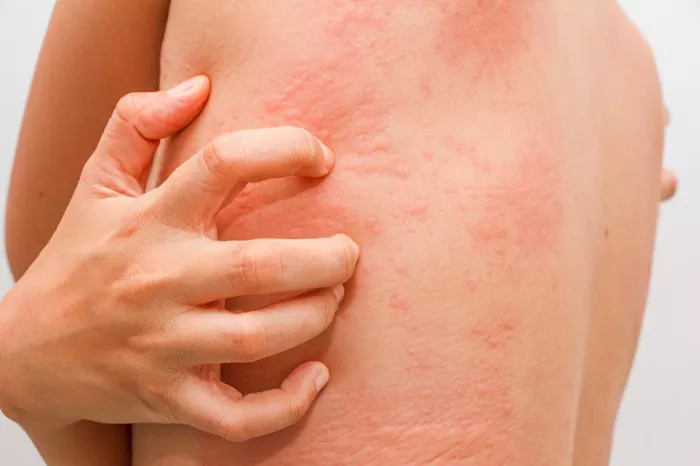Sun rash, also known as polymorphic light eruption (PMLE), is a common condition characterized by red, itchy, and inflamed skin following sun exposure. For those affected, finding the right cream to alleviate symptoms is crucial. This comprehensive guide explores the best creams for treating sun rash, detailing their ingredients, benefits, and application methods to help you make an informed decision.
Understanding Sun Rash
What is Sun Rash?
Sun rash is a type of photosensitivity reaction that occurs when the skin is exposed to sunlight, especially UV radiation. It typically manifests as small red bumps, blisters, or patches that are itchy and sometimes painful. While the exact cause is not fully understood, it is believed to be related to an abnormal immune response to sunlight.
Common Symptoms of Sun Rash
Symptoms of sun rash can vary but commonly include:
1. Redness and inflammation
2. Itching and discomfort
3. Small red bumps or blisters
4. Dry or flaky skin
5. Swelling in the affected areas
Causes of Sun Rash
Sun rash can be triggered by various factors, including:
1. Prolonged exposure to UV rays
2. Genetic predisposition
3. Certain medications that increase sun sensitivity
4. Underlying medical conditions
Diagnosis and Prevention
Diagnosing sun rash typically involves a physical examination and a review of the patient’s medical history. Preventive measures include using broad-spectrum sunscreens, wearing protective clothing, and avoiding peak sunlight hours.
Criteria for Choosing a Cream for Sun Rash
When selecting a cream for sun rash, it’s important to consider several factors to ensure effective treatment and relief. The ideal cream should:
1. Contain soothing and anti-inflammatory ingredients
2. Be free of harsh chemicals and allergens
3. Provide hydration to the affected skin
4. Offer UV protection if used during the day
5. Be suitable for the individual’s skin type and severity of the rash
Key Ingredients to Look For
Aloe Vera
Aloe vera is well-known for its soothing and anti-inflammatory properties, making it an excellent ingredient for sun rash creams. It helps reduce redness, itching, and irritation while promoting skin healing.
Hydrocortisone
Hydrocortisone is a mild corticosteroid that reduces inflammation and itching. It is particularly effective for severe cases of sun rash and can provide rapid relief from symptoms.
Calamine
Calamine lotion contains zinc oxide and ferric oxide, which have anti-itching and mild antiseptic properties. It helps to soothe irritated skin and reduce itching and swelling.
Chamomile Extract
Chamomile extract is another anti-inflammatory and soothing ingredient that helps calm irritated skin. It is gentle and suitable for sensitive skin types.
Glycerin
Glycerin is a powerful humectant that attracts moisture to the skin, helping to keep it hydrated and prevent dryness and flakiness associated with sun rash.
Ceramides
Ceramides are lipid molecules that help restore the skin’s natural barrier, keeping it hydrated and protected from further irritation.
Best Creams for Sun Rash
1. Aveeno 1% Hydrocortisone Anti-Itch Cream
Aveeno’s 1% Hydrocortisone Anti-Itch Cream is a popular choice for treating sun rash. It combines hydrocortisone with soothing ingredients like aloe vera and oat extract to provide relief from itching and inflammation.
Benefits
1. Rapid relief from itching and inflammation
2. Contains soothing and moisturizing ingredients
3. Suitable for sensitive skin
Application
Apply a thin layer to the affected area up to three times daily. Avoid using on broken skin or for prolonged periods without consulting a healthcare professional.
2. Eucerin Advanced Repair Cream
Eucerin Advanced Repair Cream is designed for dry, sensitive skin and contains ceramides and glycerin to provide intense hydration and restore the skin barrier.
Benefits
1. Deeply hydrates and repairs dry, flaky skin
2. Restores the skin’s natural barrier
3. Fragrance-free and suitable for sensitive skin
Application
Apply as needed to the affected areas, especially after bathing or prolonged sun exposure.
3. Cetaphil Daily Hydrating Lotion with Hyaluronic Acid
Cetaphil’s Daily Hydrating Lotion is lightweight yet deeply hydrating, making it ideal for soothing sun rash without feeling heavy or greasy on the skin.
Benefits
1. Lightweight, non-greasy formula
2. Contains hyaluronic acid for deep hydration
3. Suitable for all skin types, including sensitive skin
Application
Apply to clean skin twice daily or as needed, especially before sun exposure.
4. La Roche-Posay Lipikar Balm AP+
La Roche-Posay Lipikar Balm AP+ is a soothing and reparative balm that is particularly beneficial for dry, irritated skin. It contains shea butter, glycerin, and niacinamide to soothe and restore the skin.
Benefits
1. Intense hydration and skin barrier repair
2. Reduces itching and discomfort
3. Suitable for the whole family, including children
Application
Apply generously to the affected area once or twice daily, especially after sun exposure or bathing.
5. Blue Lizard Australian Sunscreen Sensitive SPF 30
For those looking for a combination of sun protection and treatment for sun rash, Blue Lizard Australian Sunscreen Sensitive SPF 30 is a great option. It provides broad-spectrum protection while being gentle on sensitive skin.
Benefits
1. Broad-spectrum UVA/UVB protection
2. Gentle, mineral-based formula
3. Suitable for sensitive and rash-prone skin
Application
Apply liberally 15 minutes before sun exposure and reapply every two hours or after swimming or sweating.
Home Remedies and Natural Alternatives
In addition to over-the-counter creams, several home remedies and natural alternatives can help soothe sun rash:
Aloe Vera Gel
Pure aloe vera gel can be applied directly to the skin to soothe and cool sun rash. It provides instant relief from itching and redness.
Cold Compresses
Applying cold compresses to the affected area can help reduce inflammation and relieve itching and pain.
Oatmeal Baths
An oatmeal bath can soothe irritated skin and reduce itching. Add colloidal oatmeal to a lukewarm bath and soak for 15-20 minutes.
Coconut Oil
Coconut oil has moisturizing and anti-inflammatory properties that can help soothe and hydrate sun rash-affected skin.
Prevention Tips for Sun Rash
Preventing sun rash involves protecting the skin from excessive sun exposure and maintaining overall skin health. Here are some tips to prevent sun rash:
Use Broad-Spectrum Sunscreen
Always apply a broad-spectrum sunscreen with an SPF of 30 or higher before going outside. Reapply every two hours or after swimming or sweating.
Wear Protective Clothing
Wear long-sleeved shirts, wide-brimmed hats, and sunglasses to protect your skin from the sun. UV-protective clothing is also available for added protection.
Avoid Peak Sun Hours
The sun’s rays are strongest between 10 a.m. and 4 p.m. Try to stay indoors or in the shade during these hours to reduce the risk of sun rash.
Gradual Sun Exposure
Gradually increase your time in the sun to help your skin build tolerance. Start with short periods and slowly extend the time you spend outdoors.
Stay Hydrated
Drink plenty of water to keep your skin hydrated from the inside out. Dehydration can make the skin more susceptible to sun damage and irritation.
When to See a Doctor
While sun rash is generally not a severe condition, it’s important to seek medical advice if:
1. The rash covers a large area of the body
2. You experience severe itching or pain
3. The rash is accompanied by fever or chills
4. Symptoms do not improve with home treatment or over-the-counter creams
Conclusion
Sun rash can be an uncomfortable and frustrating condition, but with the right treatment and preventive measures, it can be managed effectively. Choosing the right cream, such as those containing aloe vera, hydrocortisone, or ceramides, can provide significant relief from symptoms. Additionally, adopting preventive strategies like using sunscreen, wearing protective clothing, and avoiding peak sun hours can help prevent sun rash from occurring in the first place. If symptoms persist or worsen, seeking medical advice is essential to ensure proper treatment and care.
[inline_related_posts title=”You Might Be Interested In” title_align=”left” style=”list” number=”6″ align=”none” ids=”9415,9412,9408″ by=”categories” orderby=”rand” order=”DESC” hide_thumb=”no” thumb_right=”no” views=”no” date=”yes” grid_columns=”2″ post_type=”” tax=””]

































